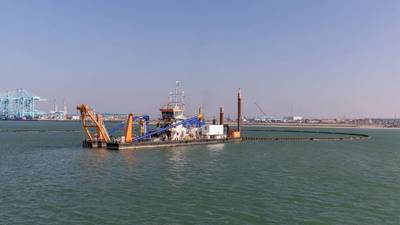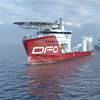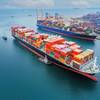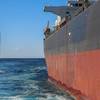Van Oord Duo Dredging in the Prinses Amaliahaven in Rotterdam
Van Oord’s cutter suction dredger Biesbosch and trailing suction hopper dredger Vox Apolonia are teaming up to dredge the Prinses Amaliahaven located on Maasvlakte in Rotterdam, the Netherlands.
A consortium of Van Oord, HOCHTIEF and Ballast Nedam has constructed 2.4 kilometres of new quay wall. The new quays are being dredged to a depth of more than 20 metres below sea level. This development means that the Port of Rotterdam Authority is ensuring an expansion of container capacity in Rotterdam.
In total 1,825 metres of deep-sea quay, 160 metres of inland shipping quay and 360 metres of earth-retaining walls have been created. Van Oord’s cutter suction dredger Biesbosch started dredging the new quay walls in December last year, trailing suction hopper dredger Vox Apolonia joined in March.
The development of the Prinses Amaliahaven will potentially increase annual throughput capacity in the port of Rotterdam by four million TEU (standard size for containers).
The dredged sand from the Prinses Amaliahaven will be used in the adjacent Prinses Alexiahaven, where Van Oord is reclaiming 45 hectares of new land. Besides sand, 1.5 million cubic metres of silt and clay that is not suitable for land reclamation will be dredged. The Vox Apolonia transports the silt to sea, after which the vessel would in principle returns empty. Combining the work of both projects, the Vox Apolonia is now dredging sand after depositing the silt and clay and transporting it to the Prinses Alexiahaven to then continue dredging in the Prinses Amaliahaven. This efficient way of working results in less fuel consumption and thus lower environmental costs.
For the underwater surveying and inspection works, Van Oord’s brand new Remotely Operated Vehicle (ROV) is being used. It is the first project on which this underwater robot is being deployed. It is equipped with a high-resolution 4K camera and sonar technology, enabling the drone to carry out reliable inspection under all kinds of conditions. The use of the drone is not only accurate, but also faster and safer. This new advanced technique means we can reduce physical diving activities on this project by more than 80%.













